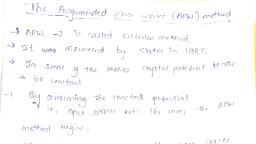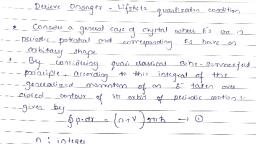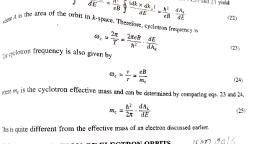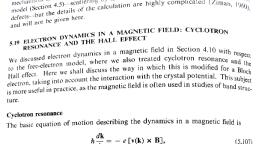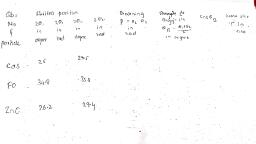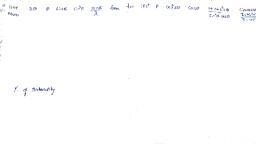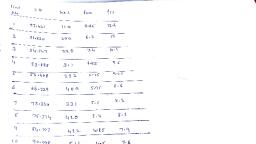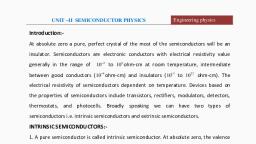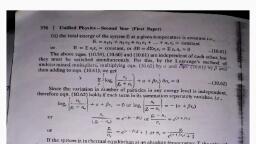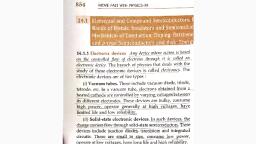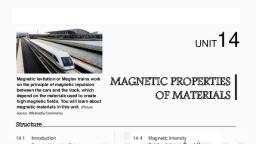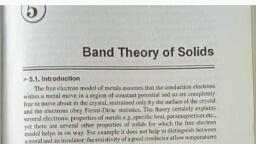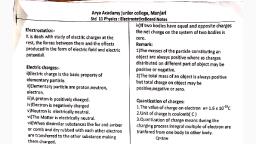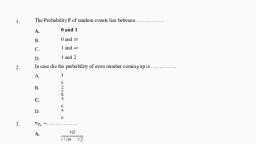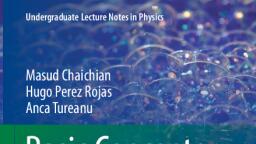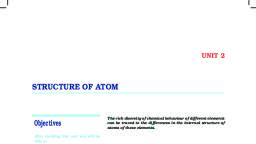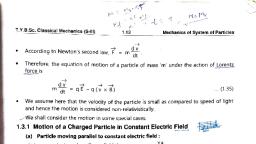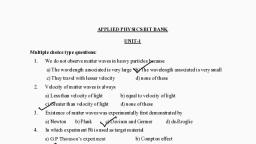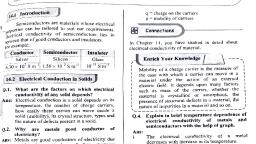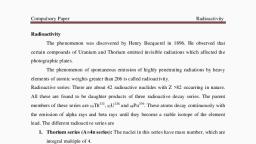Page 1 :
404, , Bloch, , Solid State Physics, , 12.5, , CHARACTERISTICS, , SURFACES, , OF, , discussions, we, , FERMI, , FS has the following, find that the, , characteric, , of conduction electro, the preceding, electron, inertial properties, and, dynamic, electrons,, conduction, 1. The FS represents the, of, number, represents the, , From, L, , 2., , 3. The FS has, , 4., ., , FS, spherical shape, , The volume of the, , For a, , z, , in higher, BZ and non-spherical, within the first, along the line ofintere, at, , right angles, , the zone boundary, the velocity of, electron case),, free, for, spherical FS (i.e., , The FS, , always, , features, , in k-space, , meets, , an, , electron is, , ones., , ection,, , on,, , hk, , (15), , mo, , shown in Fig 12A., surfaces (1.e. for electrons under neriad, periodic, On the other hand, for non-spherical Fermi, which is given by, of, k,, function, potential), the velocity is a non-linear, where, , v, , is proportional, , to, , and, , parallel, , to the, , wave, , vector k as, , VVEC), , (16), , where the velocity is proportional to the gradient of the energy in k-space. Since the, , is perpendicular to the, contour lines (i.e. the constant energy, , gradient, , vector, , curves), a well known fact from vector, analysis, it follows that the velocity v at, every point in k-space is normal to the, energy curve passing through that point, and hence the velocity may or may not, be parallel to k. This is, shown in Fig., 12.21b., 6. Study of FS provides us to know many, , Fig. 12.21, , The velocity of (a) A free electron, and, (b) A Bloch electron, , important properties of solids, such as heat capacity, Pauli's paramagnetism, electica, conductivity, etc., , 12.6, Let, , us, , EFFECT OF ELECTRIC FIELD ON FS, consider the, , when free electron FS is, wholly contained in the first BZ, in, shown Fig. 12.22a. In the absence of an, case, , (i.e. BZ 15 Ouy, electric field, each electron within, FS moves with a velocity determined, by its energy and follow, ingly, symmetry, for each electron with an energy E(k), property., Accor, etrically, moving in a particular direction there is a, located electron with energy E(-k), symmou, moving in, movement occurs. When an external electrical opposite direction and hence no nel he, in, field is applied, the, absence of electron collision with, equation of motion, , partly filled), , as, , ectron, , imperfection, phonons, , d(hk), dt, , where the negative sign indicates the, , -eE, , or, , h, , dt, , or, , any other, , =-eE, , impurities, 13, , (17), , he velocity, charge is due to electrons, The auantity dkldt is tne
Page 2 :
The Fermi Surface, , of electrons, , in, , K-space., , Equation, , 17, , 405, , indicates that for constant electric field, the velocity, CoOnstant, consequently, the, entire ES moves through Ak in k-spac, the field direction. It is because, of the movement of, OPP, each electron, , 1s, , a, , or, , electrons from near the FS into the, Tuantum states within the same zone, aujao, as shown by the, in, or electron, dashed, circle, Fig., majority, 12.220. 1 B*, velocities still cancel each other, , qua, , some, , electrons remain, , pairwise (due, , uncompensated, resulting in a net current., , to, , symmetry)., , However,, , E, , Vk), , FS, , 0, , V-k), (b), , (a), , Fig. 12.22 The Fermi sphere, electrie field, , in the, , first, , BZ, , (a) in the absence of an electric field (b) in the presence of

